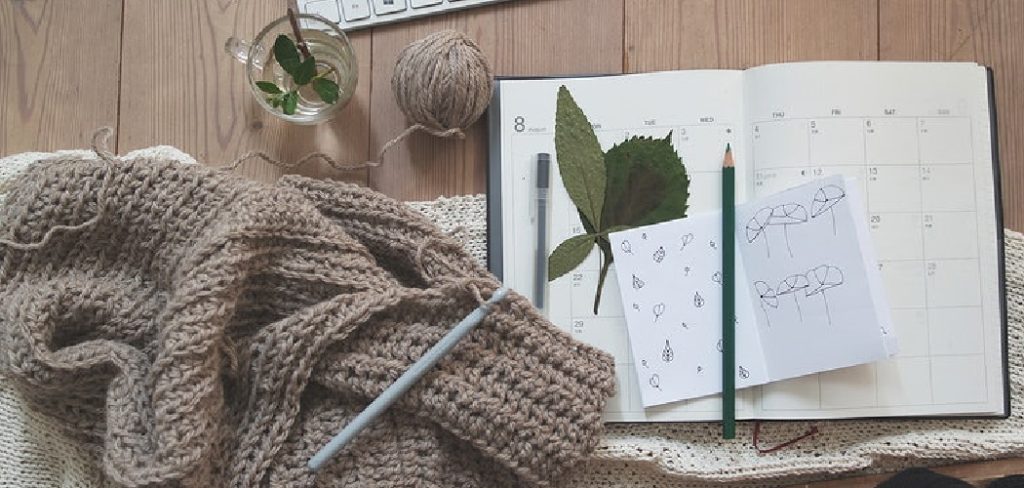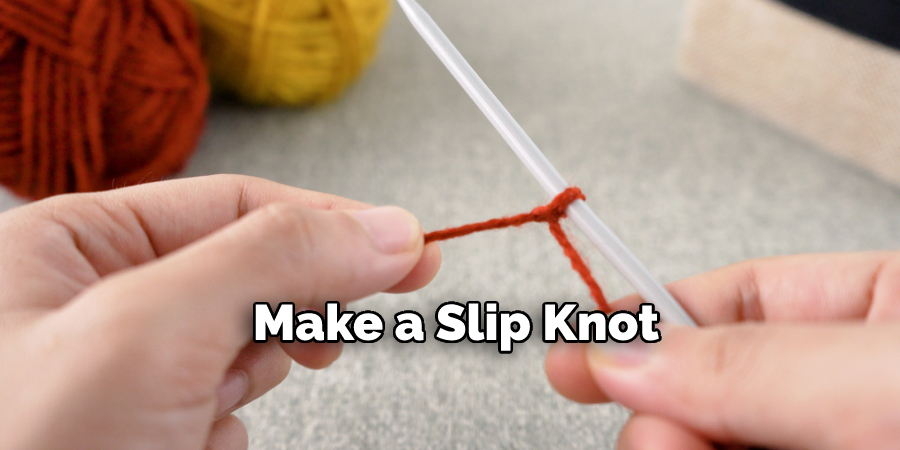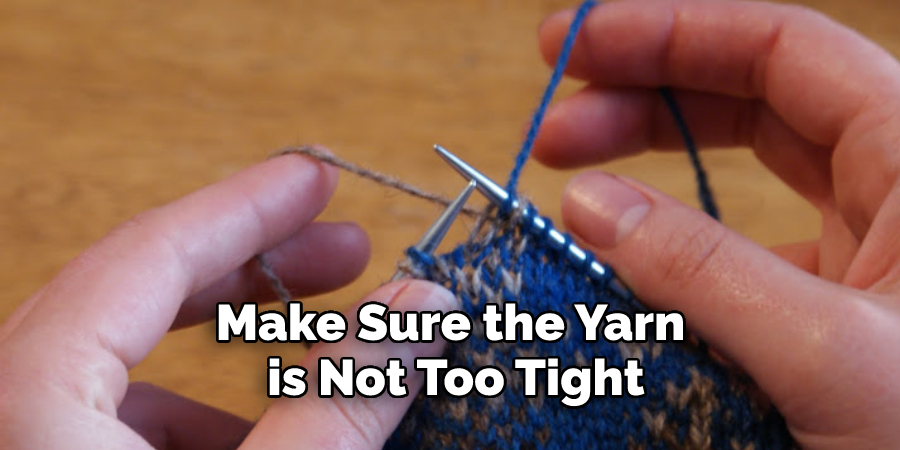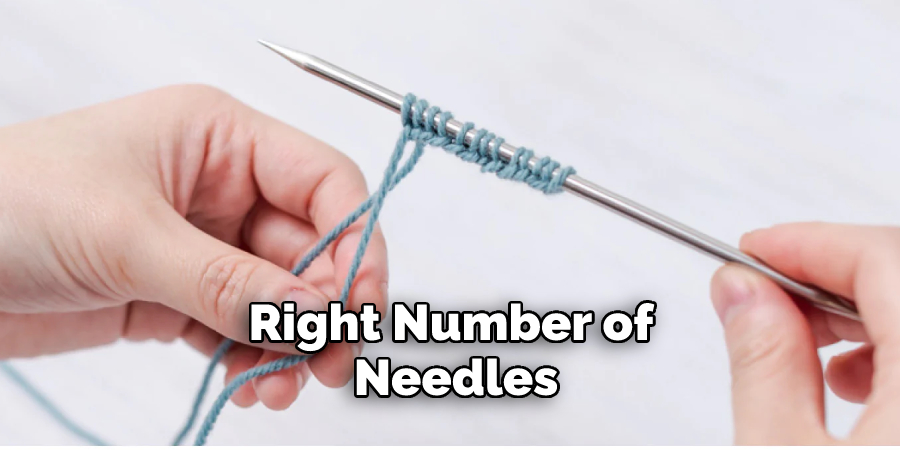Are you looking to spruce up your knitting project? Whether it’s a colorful scarf, a cozy blanket, or a stylish hat, casting on extra stitches can be just the thing to give your item an extra touch of style. No matter what your project is, learning how to cast on extra stitches can open endless opportunities for creating beautiful handmade garments and accessories.

If you’re looking to add an extra layer of detail and texture to your knitting projects, casting on extra stitches is the perfect way to do so. With this technique, you can use additional stitch patterns and colors to give your project a unique look.
In this blog post, we’ll walk you step-by-step through the process of casting on extra stitches with clear directions and helpful visuals. We’ll also discuss why these additional stitches are beneficial for adding visual interest or simply making room for other components of a project.
Why Are These Additional Stitches Beneficial for Adding Visual Interest?
Casting on extra stitches can greatly add visual interest and complexity to your knitting projects. When you cast on additional stitches, it opens up the possibility of creating unique stitch patterns or adding color blocks in between your main pattern. By casting on different sizes of stitches, you can also create interesting texture combinations that will bring new life to any project.
Using this technique, you can easily create items with intricate designs or special shaping. If you’re looking to make something that stands out from the crowd—such as a cabled hat or a blanket with an Aran-style design—casting on extra stitches is the perfect way to achieve those results!
What Will You Need?
Before you start casting on extra stitches, make sure you have the following items:
- Knitting needles
- Yarn (of your desired color)
- Scissors
- A tapestry needle for weaving in ends.
Once you have gathered these supplies, you can start to cast on extra stitches.
10 Easy Steps on How to Cast on Extra Stitches
Step 1. Make a Slip Knot
To begin, make a slip knot on one of the knitting needles. This will be your first stitch. Be careful not to pull the knot too tight, or it will be difficult to work with.

Step 2. Cast On
Once you have your slip knot, cast on as many stitches as you need for your project—or however many extra stitches you would like to add. For example, if you are working on an item with 40 stitches, but want to add ten extra stitches for texture and interest, then you would cast on 50 in total. Be careful to make sure all the stitches are evenly spaced.
Step 3. Knit Into the Slip Knot
Once you have cast on all the necessary stitches, knit into the slip knot from Step 1 to include it in your pattern. You can now move on to the next steps. Remember to keep the stitches even and maintain your tension.
Step 4. Continue Knitting
Now you can continue knitting with your new stitch pattern and extra stitches as desired. Depending on how complex you want the design to be, you can add different colors of yarn or work a variety of stitches for texture and added interest. If you are just starting out with this technique, then you may want to stick to basic stitches such as Stockinette or Garter until you get the hang of it. But don’t let that keep you from experimenting and creating something unique.
Step 5. Bind Off
Once you have reached the end of your pattern and have all the extra stitches you wanted, it’s time to bind off. This means you will be knitting two stitches together, then pulling the one on the right needle over the one on the left needle (similar to how you would with regular decreases). Repeat this until only one stitch is left, and cut your yarn.
Step 6. Weave in Ends
To finish up your project, weave in all of your leftover ends, so they are secure and no longer visible. To do this, thread a tapestry needle with some of your yarn and use it to go through each of your loops from back to front. Tie a knot at the end and snip off any remaining yarn.

Step 7. Block Your Finished Item
Once you have woven in all the ends, it’s time to block your item. Blocking will help even out any uneven stitches, make sure the edges are straight, and give your project a professional finish. To do this, dampen your piece with some water, pin it down on a flat surface (such as an ironing board or blocking mats) and allow it to dry completely before unpinning.
Step 8. Enjoy Your Finished Product
When your item is finished and dried off from blocking, it’s now ready to wear or gift! You should be pleased with how adding extra stitches has created unique texture and visual interest in your knitting projects. Congratulations, you did it!
Step 9. Continue Experimenting
Now that you have learned how to cast on extra stitches, feel free to continue experimenting with different stitch patterns and color combinations. You’ll be surprised how even the simplest of projects can become a work of art just by adding some extra stitches. With a little practice and creativity, you’ll soon be a pro at casting on extra stitches.
Step 10. Share Your Creations
Don’t forget to share your newly created projects with friends and family—they will appreciate how much effort you put into them! And don’t forget to upload photos online so your work can inspire others. After all, knitting is meant to be enjoyed by all!
By following these steps, you can now successfully cast on extra stitches and create projects with a unique texture and visual interest. Have fun knitting!
You Can Check It Out to Join Crochet Side Seams
5 Additional Tips and Tricks
- When casting on extra stitches, make sure the yarn is not too tight. It should be easy to work with and move freely in your hands.
- When casting on extra stitches, pay attention to how the new stitches are being added. Make sure they’re not too close together or spaced out unevenly.
- If you’re having trouble working with the yarn or keeping your tension even, try using larger needles when casting on extra stitches to make it easier.
- For a more polished look, consider slipping the first stitch of each row after casting on extra stitches and before knitting the next stitch to give your project a neat appearance.
- To work faster and keep track of how many extra stitches you’ve cast on, use a marker to mark each new stitch as you add them to your work, so you don’t lose count.

These tips and tricks will help you cast on extra stitches successfully, so you can move forward with your project without any trouble! Good luck!
5 Things You Need To Know Before You Cast On Extra Stitches
- Understand how to read the pattern and how many extra stitches you need to cast. This includes understanding how long each repeat is, how various stitch patterns work, and how different types of yarn will affect the size of your project.
- Consider how additional stitches may affect the look and fit of your finished item before you start casting on extra stitches – for example, if you’re adding ribbing or cabling to a sweater or hat, make sure that it won’t cause too much bulk in certain areas.
- Make sure you have the right number of needles for the cast-on method you’ll use. You don’t want to run out of needles halfway through!
- Pay attention to how the yarn is being added so that your stitches are evenly spaced, and the tension is consistent throughout.
- Have a plan for how you will weave in all the ends when you’re finished casting on extra stitches since it can be tricky to keep track of them.

By considering these five things before you start casting on extra stitches, you can easily avoid any potential problems down the road and create a beautiful finished item!
Conclusion
In conclusion, casting on extra stitches is a great way to add detail and definition to your projects. You can make your projects pop by using contrasting colors or stitch patterns. And don’t forget, if you ever get stuck. There are always experts out there who can help you troubleshoot.
You’ve now learned the way to cast on extra stitches in the middle of your knitting project. This is a handy skill to know if you need to adjust the size of your piece or fix a mistake. With a little practice, you’ll be able to add and remove stitches easily. Give it a try on your next project!
Hopefully, now you better understand how to cast on extra stitches. So, go ahead and start creating beautiful projects with unique textures and visual interest! Best of luck in your knitting adventures.
You Can Check It Out to Knit a Bow

